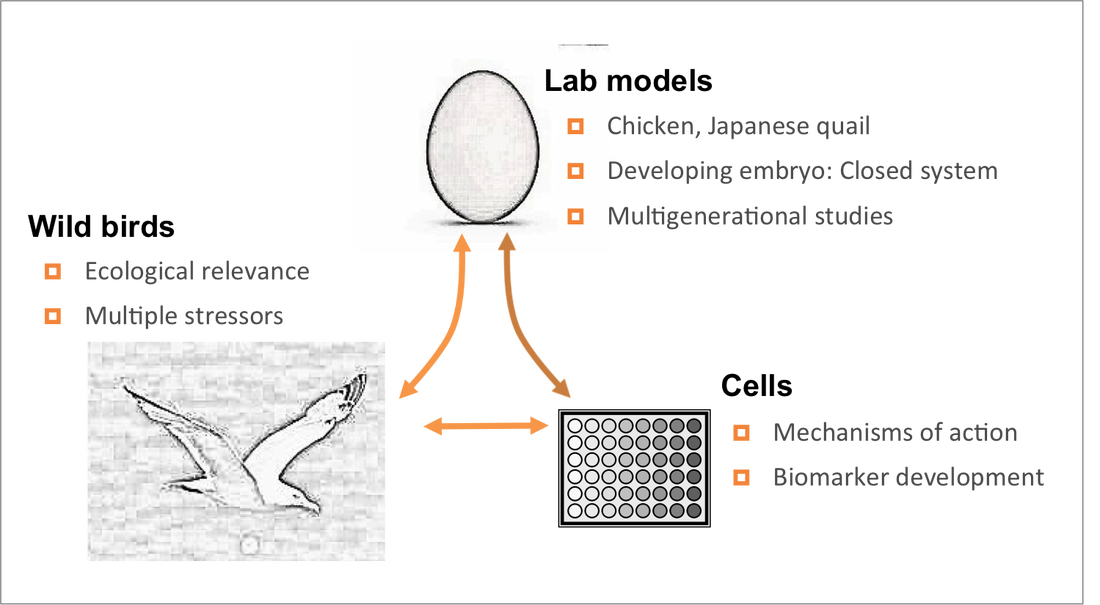|
McGill Ecotoxicology Lab Research Program:
The environment is contaminated with thousands of chemicals that have the potential to cause toxic effects. Identifying which of these chemicals pose a risk to wildlife is an enormous challenge. The standard laboratory-based approach to this problem is to expose select model organisms to graded concentrations of chemicals, and determine a level that is considered safe. This type of information is very valuable, but doesn’t capture the enormous amount of biological variability that is inherent in natural systems. For example, standard toxicity tests may have limited relevance to species that are not closely related to the test organisms. This is problematic since susceptibility to some environmental chemicals can vary by orders of magnitude, even among closely related species. In my lab, we study ‘real-world’ factors that modulate the toxicity of environmental contaminants and limit our ability to accurately assess risk in wildlife (primarily birds and fish). We are interested in research questions such as; 1. What is the molecular basis for differences in susceptibility to contaminants among different species of birds? Can we use molecular biology to identify the most sensitive species and most potent chemicals? 2. What are the effects of simultaneous exposure to multiple stressors? Does stress = harm? 3. Do individuals vary in their responsiveness to environmental chemicals? Does genetic variability within a population have a significant impact on responses to contaminants? 4. Can effects caused by environmental contaminants outlast exposures? Does embryonic exposure to contaminants affect health in adulthood or in subsequent generations? Is there an epigenetic basis for this phenomenon? |
These questions are addressed using laboratory-based science and linking the results to ecologically relevant outcomes such as growth, reproduction, and survival. We work across multiple levels of biological organization (molecular, cellular, tissue, individual, population, species), with a focus on genetic and epigenetic factors that modulate gene expression. Biomarkers of exposure, effect, and susceptibility are developed in the laboratory and measured in wild birds living in natural environments.
On the ecological side, we use avian wildlife as a sentinel for environmental health. Past work has focused on herring gulls (Larus argentatus), a colonial fish-eating species that is widely used as a biomonitor for the Great Lakes ecosystem. For future work I am exploring the possibility of studying a number of species of birds, both in the wild and in captivity. Note: Students can work on laboratory-based or field-based projects, but many will combine some aspects of each. |
Current Projects, Collaborators (trainees underlined), Funding
- Role of DNA methylation in regulation of the aryl hydrocarbon receptor (AHR) signalling in developing chicken
- Investigating early life exposures and persistent effects of PAHs in birds
- Assessing Sensitivity of Wild Birds to Dioxin-like Compounds using DNA from Feathers
- Development of epigenetic biomarkers to evaluate the effects of exposure to PAHs in fish
- Embryonic exposure to a flame retardant: Thyroid-associated changes in the brain, behaviour, and metabolism in Japanese quail
- Climate change, contaminants, ecotoxicology: interactions in Arctic seabirds at their southern range limits



